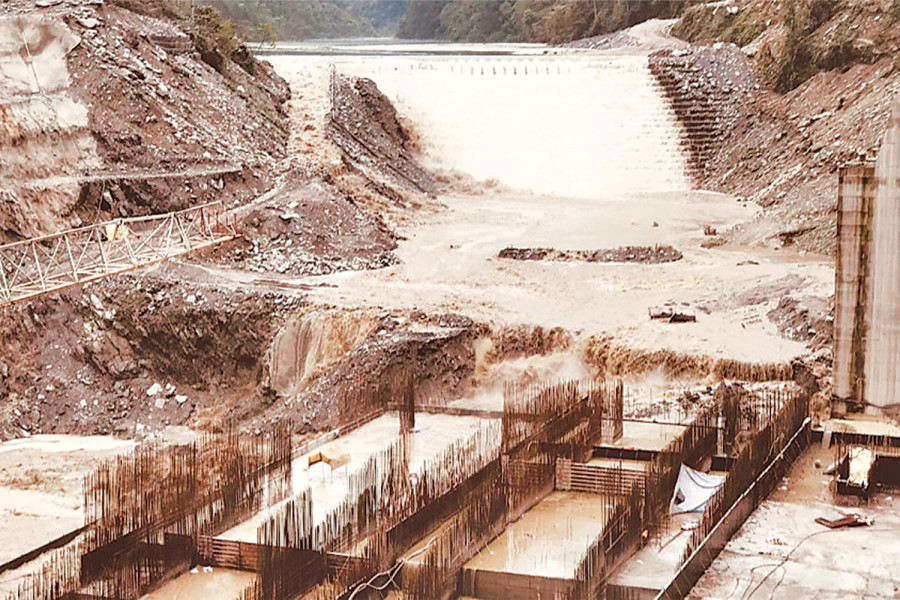Climate & Environment
Landslide in Arun III dam highlights threats to Nepal’s hydropower projects
Officials say risk of flash flood has subsided as the river overflows from the project’s dam.
Arjun Poudel
A landslide that occurred early Sunday morning blocked the Arun river at Phaksinda in Makalu Rural Municipality, Sankhuwasabha. The landslide took place at the construction site of the Arun III hydroelectric power project.
The landslide debris blocked the diversion tunnel of the project and filled the 26-metre high dam creating a nearly two kilometres long lake, raising the risk of flash floods that could engulf villages downstream. That risk has subsided for now as the river retained its normal flow after 2:40 pm, according to Birendra Godar, deputy superintendent at the District Police Office, Sankhuwasabha.
“The river started overflowing from the project’s concrete dam and the flow of the water has now returned to normal,” Godar told the Post over the phone from Khandbari, the district headquarters. “The risk of a flash flood is low.”
Following the incident, the local administration had alerted people living in the settlements downstream about a likely flood. By afternoon, a team comprising geologists and technicians from the Nepal Army, the Armed Police Force and the hydel project reached the blockage site by an army chopper to take stock of the situation.
Although the area saw rainfall on Saturday and Sunday, the wet weather was not responsible for the landslide. The culprit was a crack formed above the dam site of the project, officials said.
“After the incident, around 33 percent of the water started to flow from the tunnel of the hydel project,” said Godar. “But the project shut down the tunnel at 11 am fearing damage and then the water filled in the dam.”
Officials at the District Administration Office of Sankhuwasabha district said no one was hurt by the river blockage and there are no settlements in the immediate vicinity of the site.
“We have alerted the locals living downstream about the risks, but no one has been relocated,” said Bimal Poudel, information officer at the District Administration Office.
Arun-III is a 900-megawatt run-of-the-river mega project currently under construction. It is being built by SJVN Arun-III Power Development Company, a wholly-owned subsidiary of India’s Satluj Jal Vidyut Nigam.
The commissioning of the project, being constructed on a build-own-operate-transfer (BOOT) model, is scheduled for 2024. The construction company will operate it for 25 years, excluding the construction period of five years, and then transfer ownership to the Nepal government.
Nepal will receive 21.9 percent of the electricity generated by the power plant for free in the initial 25 years of its commercial operations.
The project was jointly inaugurated by the then Prime Minister KP Sharma Oli and his Indian counterpart Narendra Modi in May 2018.
In Nepal, independent power producers are building projects with a total capacity of 2,781 MW while the Nepal Electricity Authority is undertaking projects with a combined capacity of 943 MW, according to a recent World Bank report.
A 2018 study published in the journal Geophysical Research Letters warns that there is a limit to hydropower expansion in the Himalayas, as extreme climate events and disasters in the country become deadlier and more frequent.




 21.12°C Kathmandu
21.12°C Kathmandu











